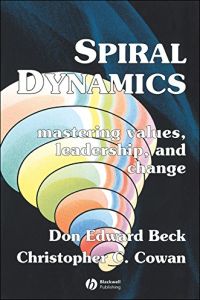Join getAbstract to access the summary!

Join getAbstract to access the summary!
Don Edward Beck and Christopher C. Cowan
Spiral Dynamics
Mastering Values, Leadership, and Change
Wiley-Blackwell, 2005
What's inside?
As one magazine asked, is spiral dynamics “the theory that explains everything?”
Recommendation
Management consultants Don Edward Beck and Christopher C. Cowan based this 1996 study on potentially game-changing work that professor Clare Graves completed 30 years earlier. The authors describe a series of spirals as the basic construct in the life cycle of a person, organization or nation. All the spirals or levels in this “spiral dynamic” system can be present simultaneously, and they are infinite – they place no limit on human or group development. Anyone who has worked with other people will find that spiral’s levels look familiar and make sense. A less useful book might end by describing the levels and their values or “memes,” but here, the authors supply dozens of examples and a detailed blueprint for putting knowledge of the levels into practice to help people and groups change. While smart and applicable, the book is difficult to parse: It is stylistically flawed, the editing is shaky and the structure is baffling. After reading the introduction and chapter 1, readers should skip to section 3 – a rich, interesting description of each level on the spiral. After this, getAbstract finds, reading chapters 2 to 8 – which cover the actual application of spiral dynamics – will be far more rewarding.
Summary
About the Authors
Management and change consultant Don Edward Beck co-founded the National Values Center, where consultant Christopher C. Cowan is director. Cowan implements the Spiral Dynamics framework for organizations worldwide.

















Comment on this summary